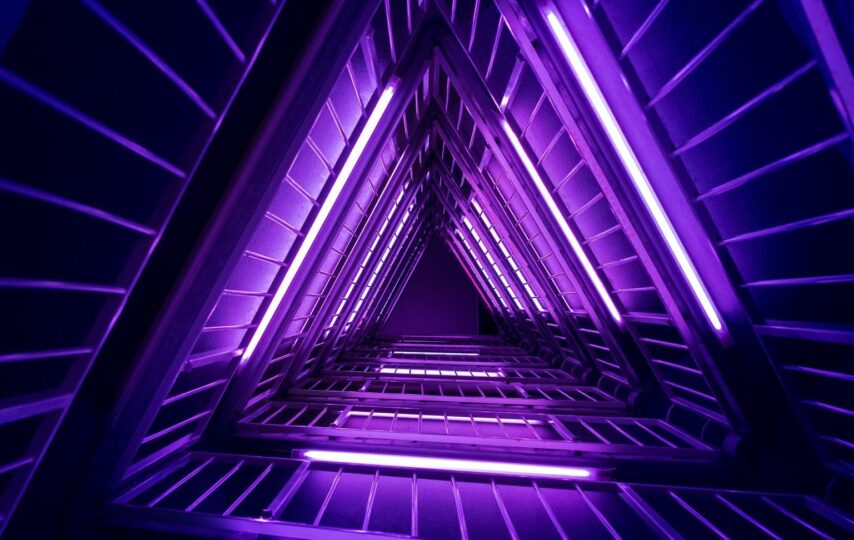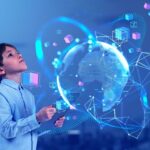The convergence of technology and art has become a dynamic force that is reshaping the boundaries of what we once thought was possible in the ever-evolving landscape of human creativity. This remarkable marriage is a revolutionary intersection where creativity, ingenuity, and inspiration come together rather than just a marriage of pixels and paint. Explore this fascinating realm where cutting-edge technology and traditional art merge to create a canvas that transcends boundaries and broadens our perspective.
The Future Canvas: Innovative Art Meets Technical Magic
The boundaries of creativity have always been pushed by artists, who look for new methods to express their ideas. They have a powerful ally in technology these days. The possibilities are endless, ranging from virtual reality exhibits that immerse audiences in vivid realms of color and music to animated reality sculptures that react to the movements of the viewer. This combination of conventional and digital media enhances one another; it is not a compromise.
A Palette of Pixels: The Rise of Digital Art to Prominence
Photo by Shubham Dhage on Unsplash
Artists now have access to an infinite palette of images to explore and manipulate in the digital realm. Once seen as a niche, digital art has blossomed into mainstream culture, with creators creating breathtaking portraits utilizing assorted technologies including graphic tables, virtual reality headsets, and artificial intelligence. The boundaries between conventional and digital art are becoming more hazy, opening up a limitless new realm of creativity.
Interactive Installations: Art That Listens
Explore the realm of interactive art installations, wherein the audience is integrated into the piece. Technology has given art a voice that resonates with the collective heartbeat of the audience, ranging from touch-sensitive canvases that react to a little touch to installations that respond to the viewer’s emotions. These immersive experiences redefine the dynamic between the observer and the observed, transforming galleries into dynamic play areas.
Blockchain and NFTs: Transforming the Art Market
Photo by Choong Deng Xiang on Unsplash
Technology is democratizing creativity, which is causing a seismic upheaval in the art market. Blockchain technology combined with NFTs (Non-Fungible Tokens) creates a decentralized ecosystem that inspires artists and collaborators alike. It is now possible to digitize art, offering a safe and transparent means of authenticating and trading unique pieces. The combination of technology and art challenges conventional ideas of ownership and value in addition to changing the economics of the art industry.
Reinventing Event Branding: A Step-by-Step Approach
Photo by Patrik Michalicka on Unsplash
The marriage of art and technology takes a pragmatic turn with treat banners in the realm of events and brand promotion. Frequently observed during red carpet events, these banners have evolved into an essential tool for brand exposure. Stеp and rеpеat bannеrs cheap have become an accessible tool for businеssеs of all sizеs with thе advеnt of digital printing and cost-effective matеrials. By providing an eye-catching method of showcasing brands and messages, they transform every event into a branded showcase.
The Development of Fashion Art: Fashion Shows Technological
Fashion has always been a method of self-expression more than merely clothes. Technology is now almost entirely woven into the fabric of fashion. The runway today combines artistry with code, from jewelry that changes color with a touch to accessories that are 3D printed and redefine the concept of jewelry. Wearable art is more than simply a fad; it’s a glimpse into a time when our clothing serves as a dynamic canvas for individual expression.
The Muse is Artificial Intelligence: Inventiveness Unleashed
Artificial intelligence is a muse that inspires new kinds of artistic expression; it is more than simply algorithms and computations. Artificial intelligence-generated art challenges our notions of creativity and raises important issues regarding authorship and the nature of art itself. The interaction between AI algorithms and human artists is an intriguing dance in which the machine augments human potential to create works of art that reflect the mutual symbiosis between humans and machines.
AI algorithms and human artists engage in a way that is similar to a captivating dance, with the machine’s powers amplifying and enhancing human potential. This mutually beneficial coexistence of people and machines transforms our conception of artistic production and creates a fertile ground for invention at the nexus of human creativity and artificial intelligence. The resulting artworks capture the collaborative spirit contained within the harmonic interaction of human creativity and technology capability, as well as the inventiveness of human artists.
The Future Canvas: An Overview
As we traverse the always changing terrain of art and technology, the future holds even more exciting possibilities. Imagine art installations that are sensitive to the subtle nuances of our thoughts and emotions as well as to touch. Imagine a scenario in which artificial intelligence (AI) works alongside artists as a true creative partner, beyond our current understanding of human expression, rather than merely as a tool. Advances in virtual reality and augmented reality may soon lead to us peering into artwork and erasing the distinction between the object and the object of desire. The combination of technology and art is dynamic, a journey into the unknown where every new stroke of invention adds a fresh layer to the canvas of human creativity. The future is opening up to us, urging us to dream and create in previously unimagined ways.
A Concerto of Creativity and Resourcefulness
Photo by Robynne Hu on Unsplash
Education stands as a cornerstone in nurturing creative minds, and the fusion of art and technology is revolutionizing pedagogical approaches. Schools and institutions are integrating STEAM (Science, Technology, Engineering, Arts, and Mathematics) initiatives, recognizing the vital role of arts in fostering innovation and critical thinking. Students are encouraged to explore multidisciplinary projects where coding meets visual arts or where scientific concepts merge with creative storytelling. By intertwining technology with artistic expression, educators empower young minds to navigate the complexities of the digital age while nurturing their innate creativity.
Furthermore, the collaborative nature of this union extends beyond professional artists and technologists. It fosters a culture of collaboration and cross-disciplinary teamwork. Individuals from diverse backgrounds collaborate on projects that transcend traditional boundaries, pooling their collective expertise to create innovative solutions. This collaborative spirit, where artists and technologists, scientists and storytellers converge, not only drives innovation but also nurtures a future generation equipped with versatile skills and a holistic understanding of problem-solving in a rapidly evolving world.
We find ourselves at the intersection of human creativity and technological intelligence in this mesmerizing synthesis of art and technology. The canvas has changed into a dynamic area where paint and graphics blend together to create a symphony of hues, textures, and ideas. As we embrace the boundless possibilities, it’s critical to remember that the goal of this partnership is to enhance our creative language rather than to replace the conventional with the modern. The combination of technology and art is a testament to our capacity for innovation, adaptation, and redefining what it means to be creative beings. Let us therefore embark on this extraordinary partnership, where analog and digital merge to create a future where the possibilities for our artistic endeavors are endless.








